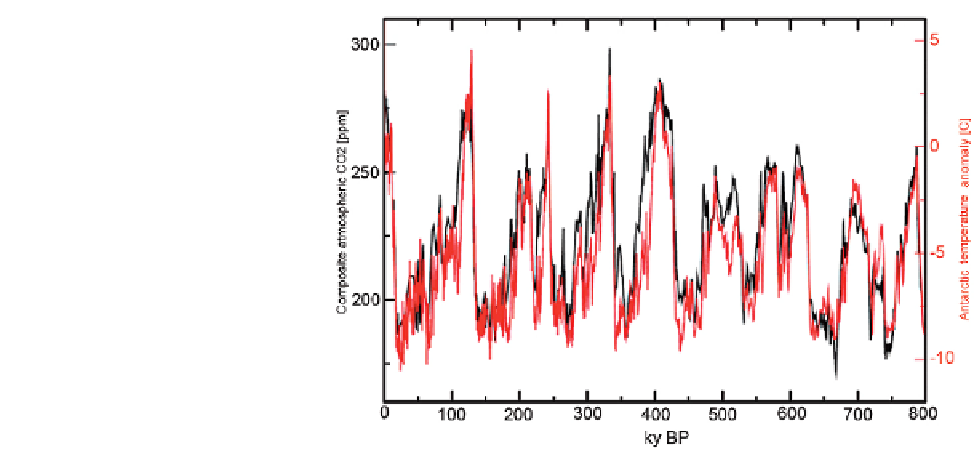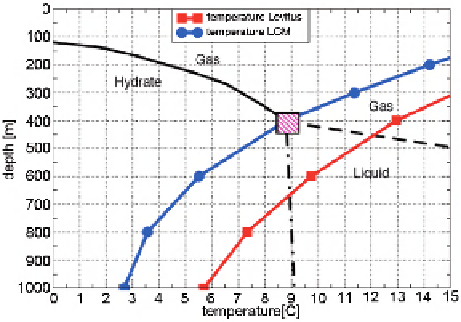Geoscience Reference
In-Depth Information
Plate 1. Graph of CO
2
(red) obtained from a composite of different ice core CO
2
measurements [Jouzel et al., 2007; Luthi
et al., 2008] and reconstructed temperature (back), measured in the EPICA Dome C ice core [Jouzel et al., 2007].
Clark, 2010]. There have been suggestions that some regions
of the abyssal ocean contained anomalously old carbon
[Sikes et al., 2000; Skinner et al., 2010]. However, interpre-
tations of available data from the deep sea are not unequiv-
ocal. For example, two studies that used
14
C age differences
between planktonic (Globigerina bulloides) and benthic
foraminifera from abyssal cores from the South Atlantic
(TN057-5, 41°S, 10°E, ~4700 m by C. Charles (unpublished
results, 2010) and TN057-21, 41°S, 7°E, ~4900 m by Barker
et al. [2010]) found no clear evidence of anomalously old
abyssal water mass ages during the last glacial, whereas
Skinner et al. [2010] made
14
C age measurements for plank-
tonic and benthic foraminifera from another South Atlantic
core located at 44°4.46
W, 3.8 km (MD07-3076
CQ) that suggest ventilation ages were higher during the last
glacial. The differences between these records are enigmatic
and underscore the dif
S, 14°12.47
′
′
culty in using planktonic-benthic
14
C
age differences as estimator of water mass age. As Skinner et
al. point out, there are significant uncertainties associated
with reservoir age corrections for planktonic age estimates,
the species used to estimate surface ages and inherent errors
due to contamination and reworking. Given the magnitude of
Δ
14
C change during the last glacial termination, it would
seem most likely that abyssal sites in the Atlantic and the
Pacific should record anomalously old
14
Cages.Yetin
reviewing the
14
C data from sites at 41°S in the Atlantic
[Barker et al., 2010] and abyssal sites within the Paci
Plate 2. Phase diagram for CO
2
as a function of temperature and
pressure showing how cooling during glaciations would shift the
depth of hydrate stability upward. The modern temperature gradient
through the water column [Levitus, 1994] is shown in red for a site
located at 164°E, 30.5°S. An estimate of temperature gradient at this
site for glacial conditions (blue), obtained by adding the difference
of the Last Glacial Maximum (LGM)-present-day anomaly simulated
by the LOVECLIM LGM simulation [Timmermann et al., 2009] to
the Levitus [Levitus, 1994] present-day climatology, is shown. Note
that today, CO
2
hydrate is stable below 700 m, but in the glacial
ocean, it expanded upward more than 300 m at this location.
c,
Broecker and Clark [2010] conclude there is no convincing
evidence to support the existence of an anomalously old
water mass at abyssal depths during the last glacial.
Identifying an appropriate oceanographic mechanism to
explain enhanced sequestration of atmospheric CO
2
during
glaciations has also been problematic. Sigman and Boyle
[2000] pointed out, for example, that simple ocean mecha-
nisms for atmospheric CO
2
regulation, such as enhanced










Search WWH ::

Custom Search